Apply now to join our next cohort of Community Science Fellows and Community Leads!
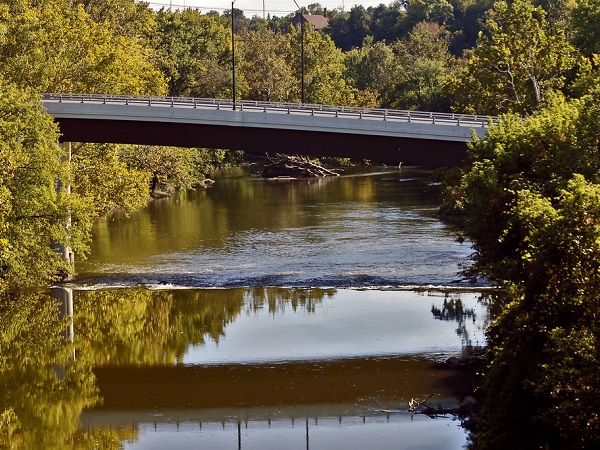
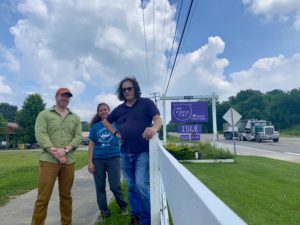 June 2021 – Dr. John Stoltz, Dr. Colleen McLean, and Brendan O’Leary met in Youngstown, Ohio to conduct surface water sampling near the Meander Creek Reservoir and surrounding area. Samples will be incorporated into a community database aimed at understanding surface water quality in the Youngstown region.
June 2021 – Dr. John Stoltz, Dr. Colleen McLean, and Brendan O’Leary met in Youngstown, Ohio to conduct surface water sampling near the Meander Creek Reservoir and surrounding area. Samples will be incorporated into a community database aimed at understanding surface water quality in the Youngstown region.
Youngstown, Ohio is an urban city of approximately 62,000 people on the eastern side of Ohio close to the Pennsylvania border. Youngstown is the county seat of Mahoning County and located along the Mahoning River. Major employers are Youngstown State University (YSU) and Mercy Health hospital. The region’s industry historically revolved around steel manufacturing but like most of the industrial Midwest, the region has seen a downturn in steel production over the second half of the 20th century. Recently, natural gas drilling activities and related industries (e.g., injection wells, compressor stations) have grown due to the relative proximity to the natural gas fields in southeast Ohio and southwestern Pennsylvania.
Residents of Youngstown are concerned with the surface water quality of Meander Creek, the Mahoning River, and associated tributaries. There is a concern about volatile organic compounds and other potentially carcinogenic chemical compounds leaking into surface water bodies from natural gas related activities near the Youngstown water supply. In a recent consumer confidence report put out by the Mahoning Valley Sanitary District, it states that the water contains trihalomethanes which is a known human carcinogen1. This report along with the increase of injection wells in the region are a concern to residents. Residents want to develop a sampling strategy for the region’s surface water bodies.
Previous efforts to understand the surface water quality include deploying water quality test sampling kits in the surrounding tributaries, deploying hexane sampling bags, and analyzing the kits for volatile organic compounds and radioactivity. In addition to water quality, concerns around earthquakes related to local injection wells have been investigated. Dr. Yuan Young Kim at the Lamont Doherty Earth Observatory and Dr. Ray Beiersdorfer at Youngstown State University used seismographs to determine seismic activity.
Community groups in the Youngstown area (Youngstown Water Protection Community Bill of Rights and Frack Free Mahoning) seek to partner with the local science community to develop an independent surface water sampling network. Past efforts will help inform future sampling for the project.
Outputs from this project include developing a community database for surface water sampling, expanding community outreach on local water chemistry, and mapping the sampled tributaries and surface water bodies. Community impacts include a better understanding of surface water chemistry and regional maps of the sampling activities. The project seeks to facilitate an understanding of chemicals of concern in local water bodies and relate them back to municipal reporting for a better understanding of the Mahoning water resources.
To carry out the water chemistry aspect of the project, the following analyses will be developed by team members listed below:
Water Chemistry analysis:
Lynn Anderson is a local environmental rights activist and with the Youngstown Drinking Water Protection Bill of Rights. Lynn will serve as the main point of contact in Youngstown for the project. In this role, Lynn will serve as the liaison between the scientist(s) and the community. She will help facilitate access to data collection and assist in overcoming local/political/logistical hurdles as they arise.
Leatra Harper is a community organizer with We Want Clean Water and the Freshwater Accountability Project. She is serving as the second point of contact and will help facility community efforts with the Youngstown project. Prior to this project, she led a similar Thriving Earth Exchange effort in Cambridge, OH. She will also help facilitate access to data collection and assist in overcoming local/political/logistical hurdles as they arise.
Additional community volunteers were identified:
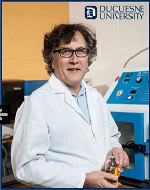 John Stolz is Director of the Center for Environmental Research and Education; Professor, Environmental Microbiology Bayer School of Natural and Environmental Sciences Department of Biological Sciences; Center for Environmental Research and Education at Duquesne University in Pittsburgh, PA. John is interested in both fundamental questions in microbial ecology as well as the application of unique microbial species for bioremediation. There are three major areas of interest in his lab:1) the ecophysiology, biochemistry, and molecular biology of dissimilatory metal reducing bacteria, 2) the ecophysiology of phototrophic prokaryotes and 3) the environmental impacts and microbiology of unconventional shale gas extraction. John has a Ph.D. in Biology from Boston University.
John Stolz is Director of the Center for Environmental Research and Education; Professor, Environmental Microbiology Bayer School of Natural and Environmental Sciences Department of Biological Sciences; Center for Environmental Research and Education at Duquesne University in Pittsburgh, PA. John is interested in both fundamental questions in microbial ecology as well as the application of unique microbial species for bioremediation. There are three major areas of interest in his lab:1) the ecophysiology, biochemistry, and molecular biology of dissimilatory metal reducing bacteria, 2) the ecophysiology of phototrophic prokaryotes and 3) the environmental impacts and microbiology of unconventional shale gas extraction. John has a Ph.D. in Biology from Boston University.
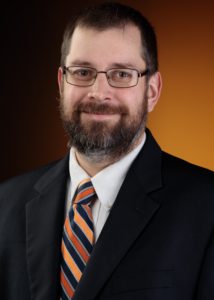 Chris Spiese is Associate Professor at Ohio Northern University. His interests lie in the field of environmental chemistry. During graduate school, he studied volatile sulfur compound production by marine phytoplankton. In addition to that work, he is currently studying phosphorus dynamics in the Lake Erie watershed, both in the water and in the soil. Current efforts are examining the role of glyphosate in dissolved phosphorus loading in the Maumee River and monitoring water quality in various subwatersheds of the Blanchard River.
Chris Spiese is Associate Professor at Ohio Northern University. His interests lie in the field of environmental chemistry. During graduate school, he studied volatile sulfur compound production by marine phytoplankton. In addition to that work, he is currently studying phosphorus dynamics in the Lake Erie watershed, both in the water and in the soil. Current efforts are examining the role of glyphosate in dissolved phosphorus loading in the Maumee River and monitoring water quality in various subwatersheds of the Blanchard River.
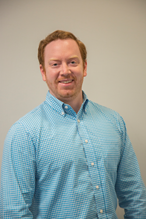
Brendan O’Leary is a PhD candidate in the Civil and Environmental Engineering Department at Wayne State University. His research interests include groundwater in the Great Lakes Basin, volatile organic compound subsurface movement, vapor intrusion, and environmental justice. Brendan received an undergraduate degree from Allegheny College in Pennsylvania where he double majored in Environmental Science and Environmental Geology. He went on to receive his Masters of Science in Geology at WSU under Dr. Larry Lemke, completing his thesis focused on geostatistical modeling and how spatial temporal modeling can help better understand air pollution influences on asthma and perinatal issues. Brendan also worked as a field geologist for the environmental consulting firm, Arcadis, performing vapor intrusion studies, groundwater sampling and modeling, and soil and bedrock drilling. Currently, Brendan is conducting research on urban groundwater with Health Urban Waters and Transformative Research in Urban Sustainability Training (T-RUST) programs at Wayne State University.
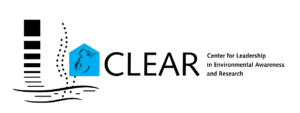
The Center for Leadership in Environmental Awareness and Research (CLEAR) at Wayne State University (WSU) is partnering with the Thriving Earth Exchange Youngstown project to provide analytical chemistry support. CLEAR is an interdisciplinary research collaboration at WSU focused on research, training, and outreach related to volatile organic compounds.
CLEAR members, Dr. Judy Westrick, Dr. Nicholas Peraino, and Brendan O’Leary, are collaborating at WSU to develop volatile organic datasets for the Youngstown project. Dr. Judy Westrick is the director of the Lumigen Center at WSU. Dr. Nicholas Peranio is the Mass Spectrometry Laboratory Manager. Brendan O’Leary is a Thriving Earth Exchange Fellow and Thriving Earth Exchange Lead for the Youngstown project.
(c) 2025 Thriving Earth Exchange